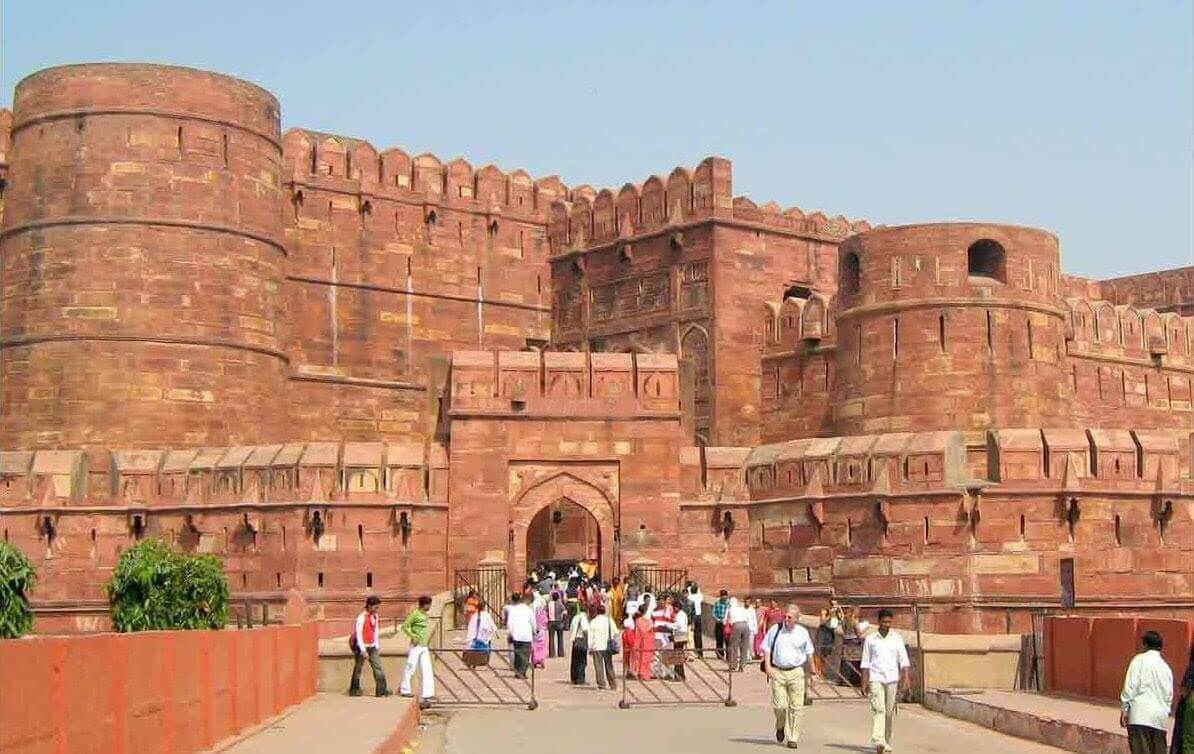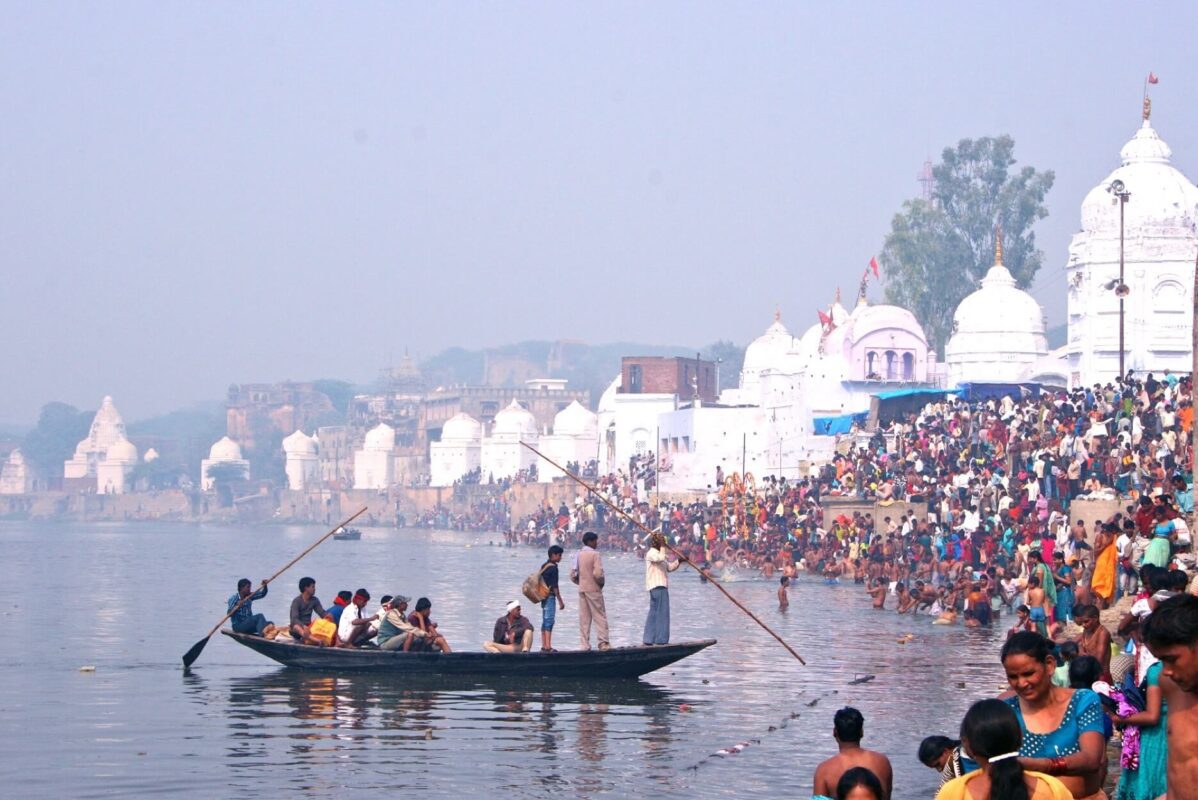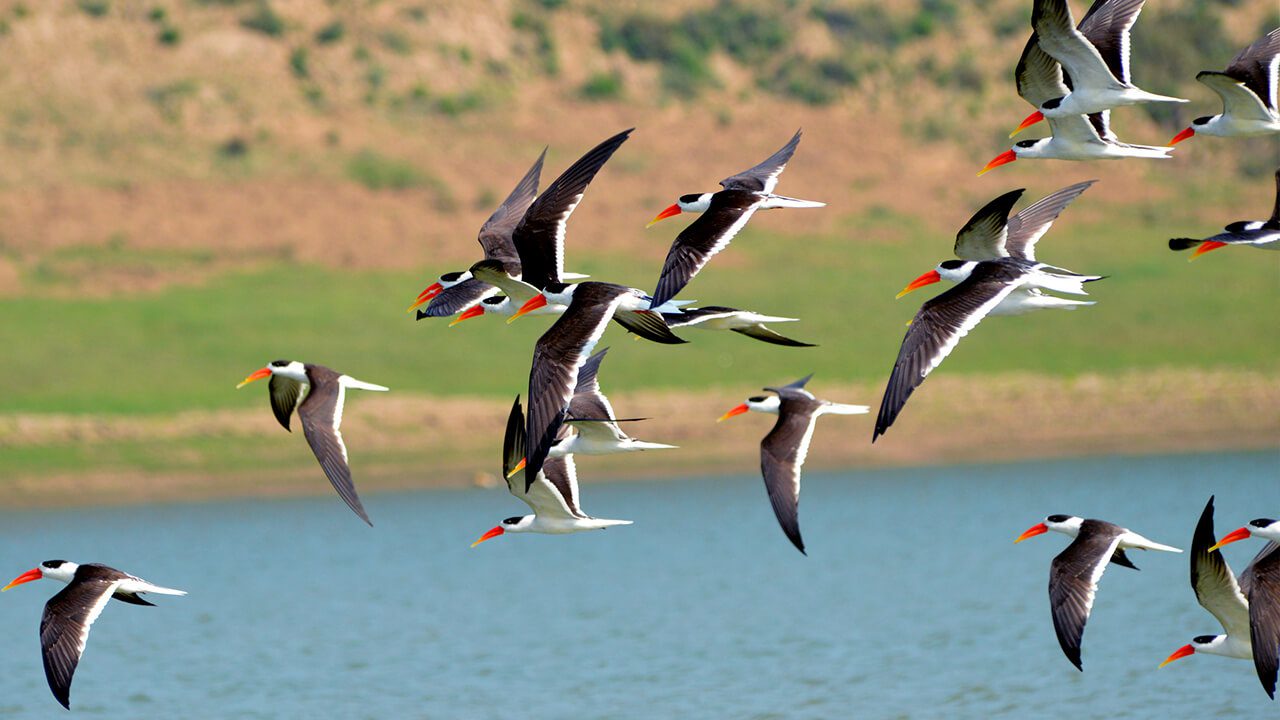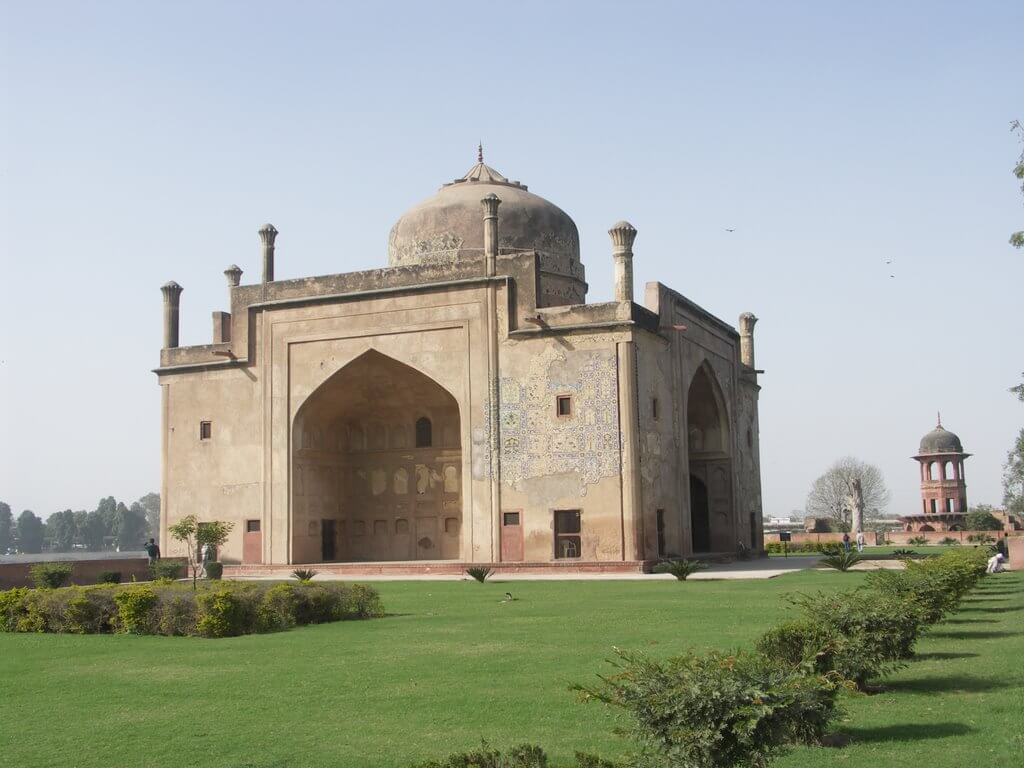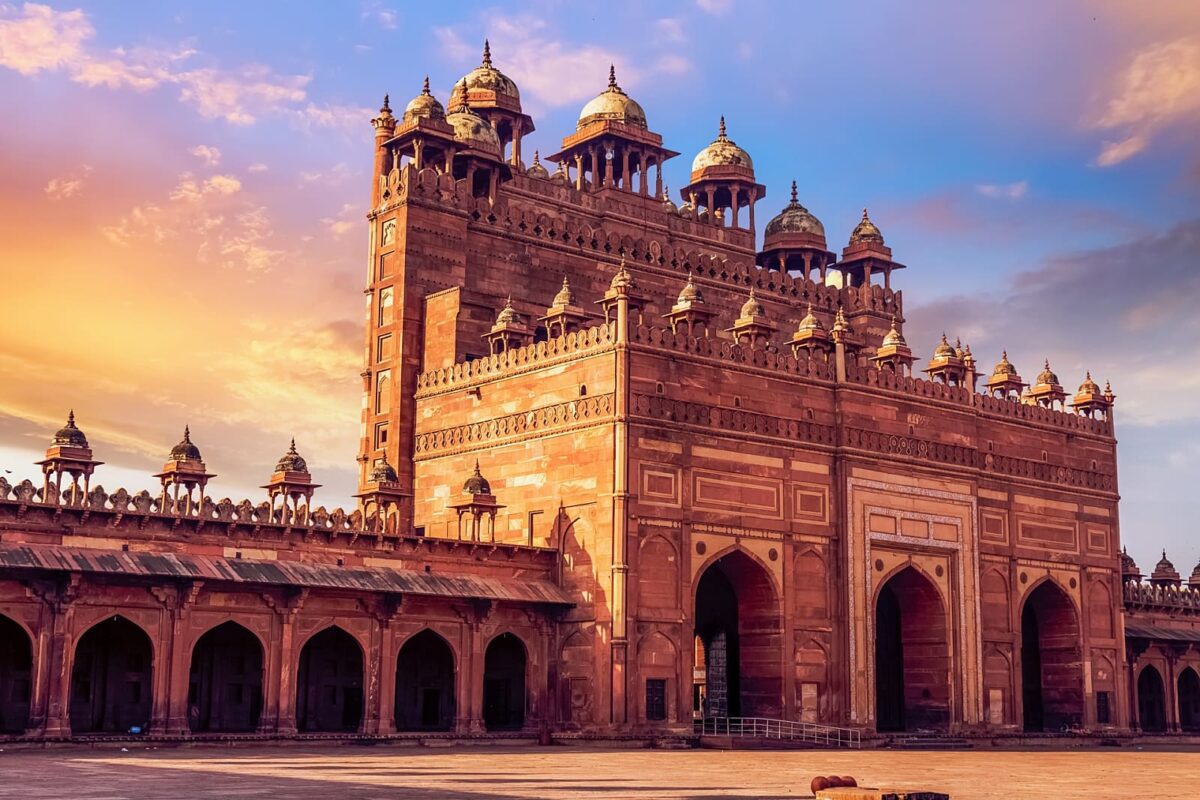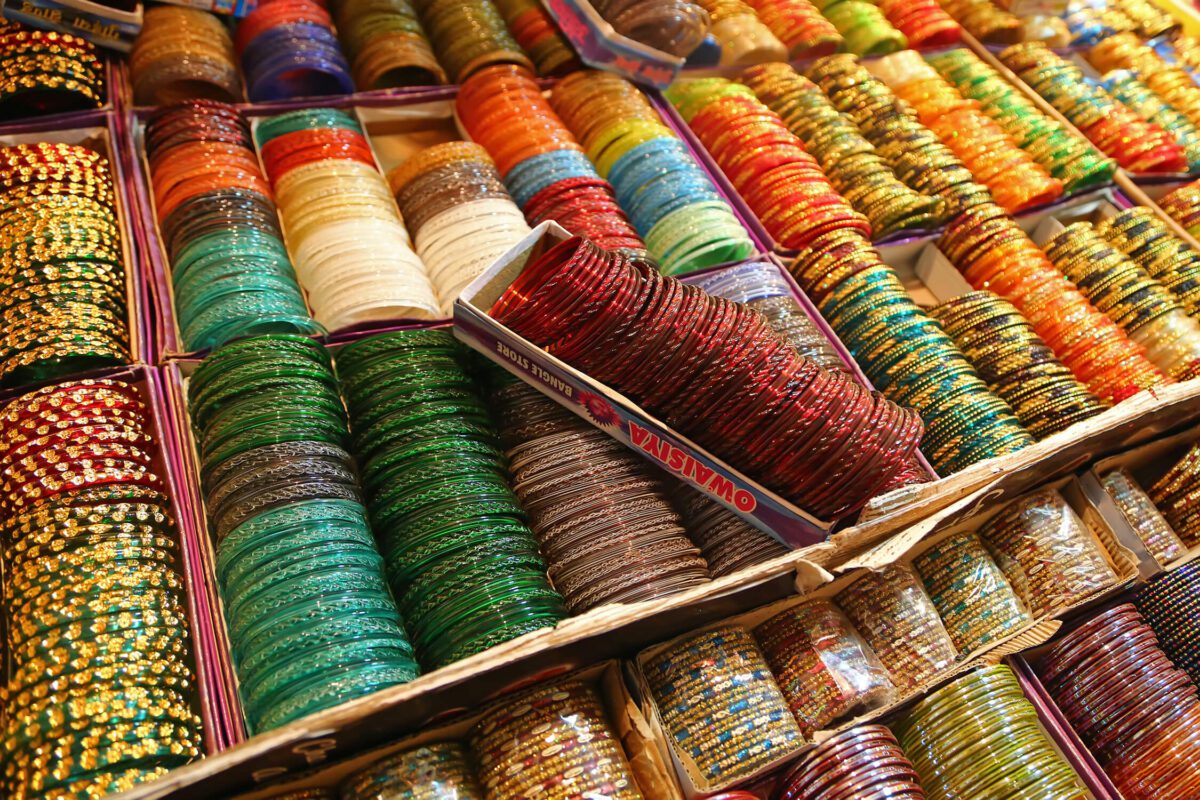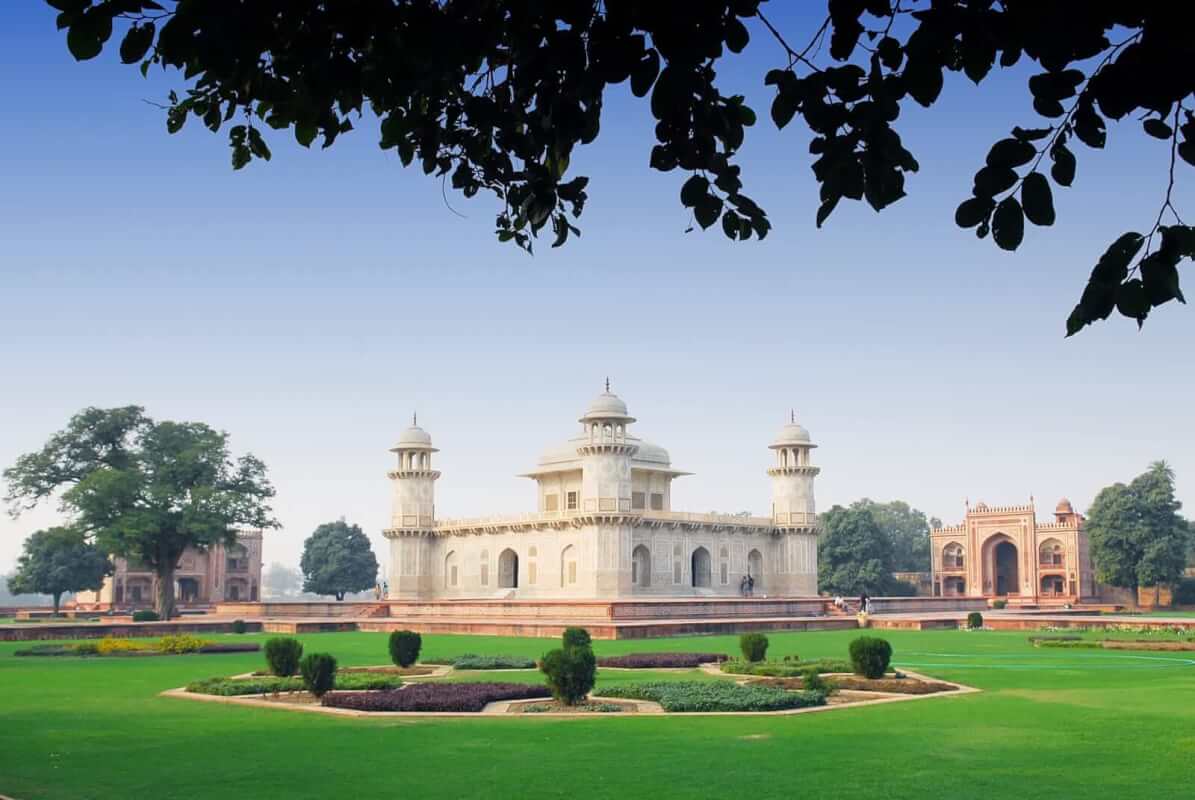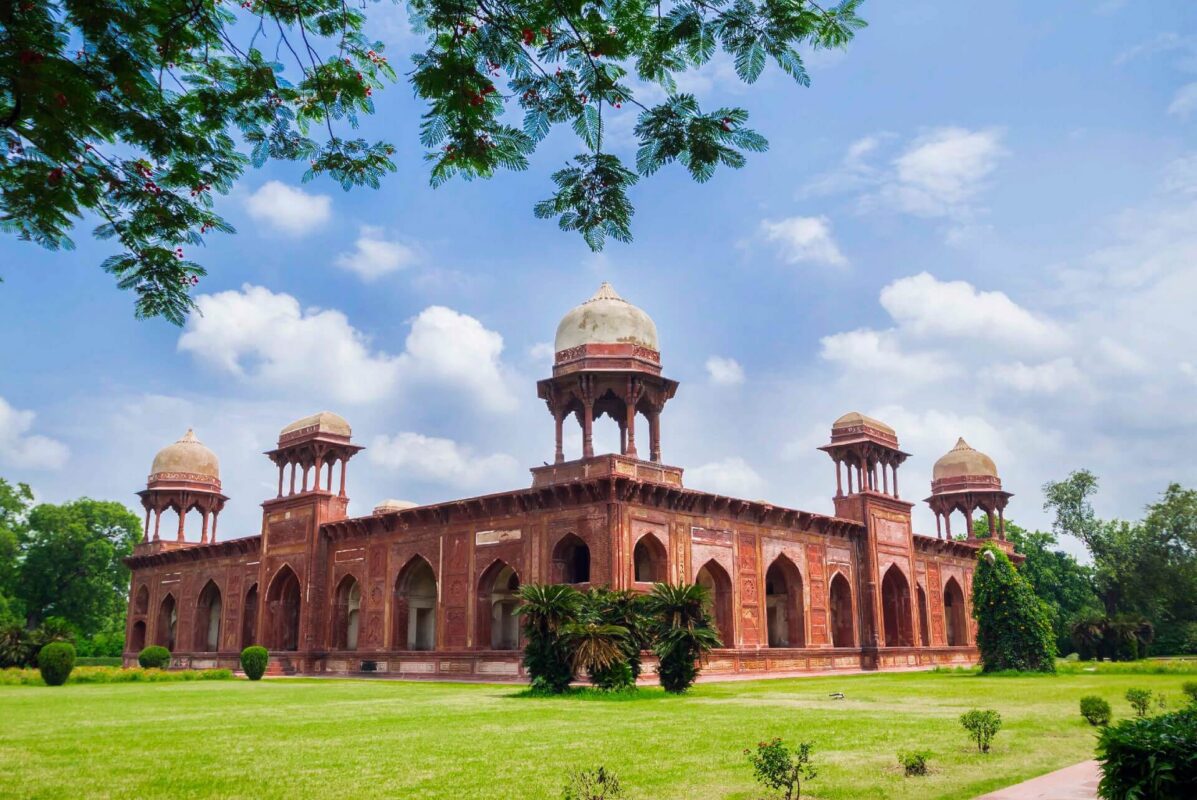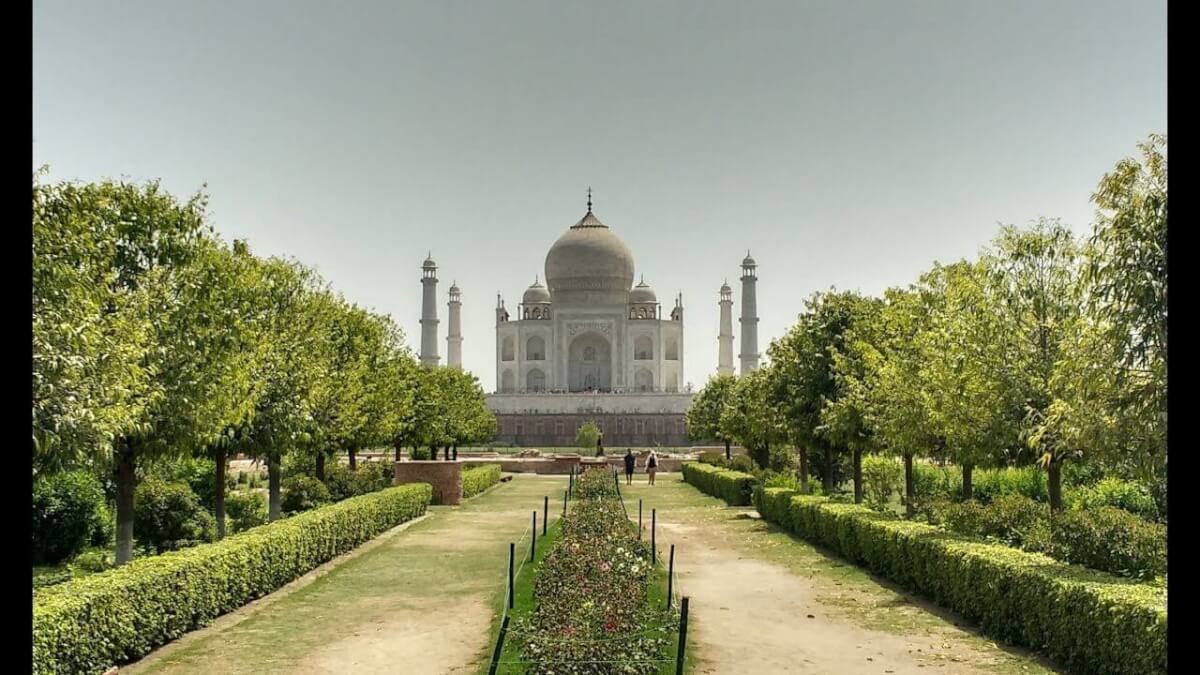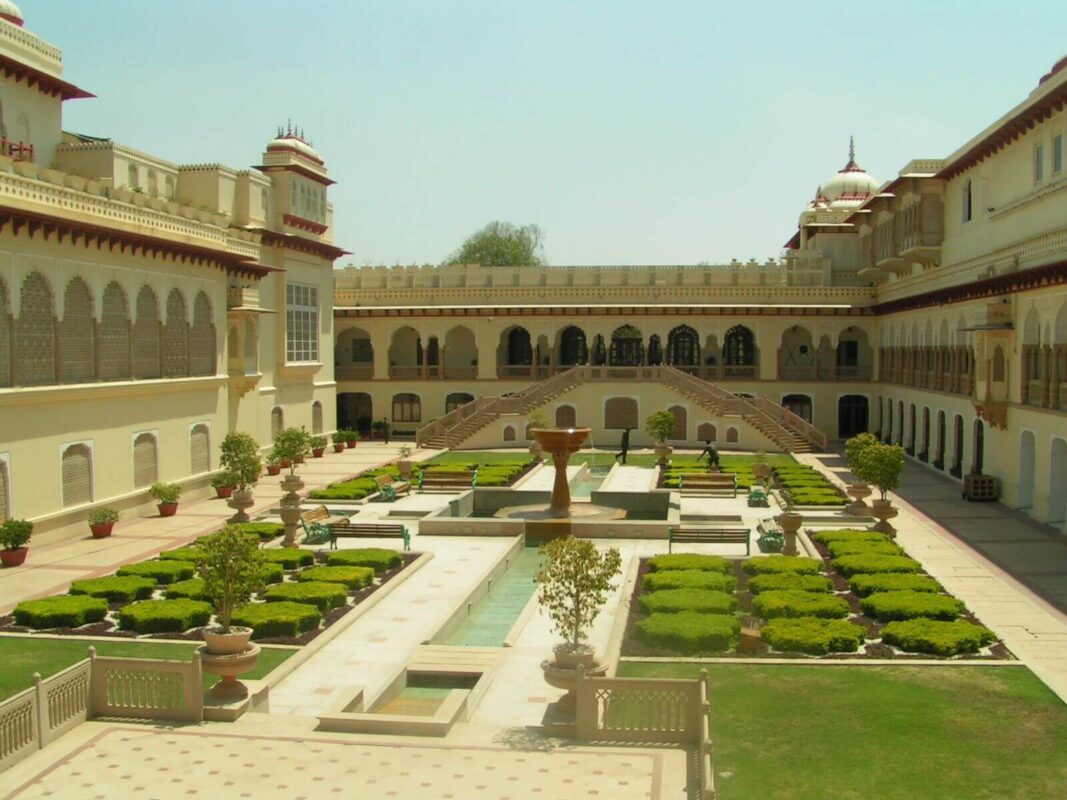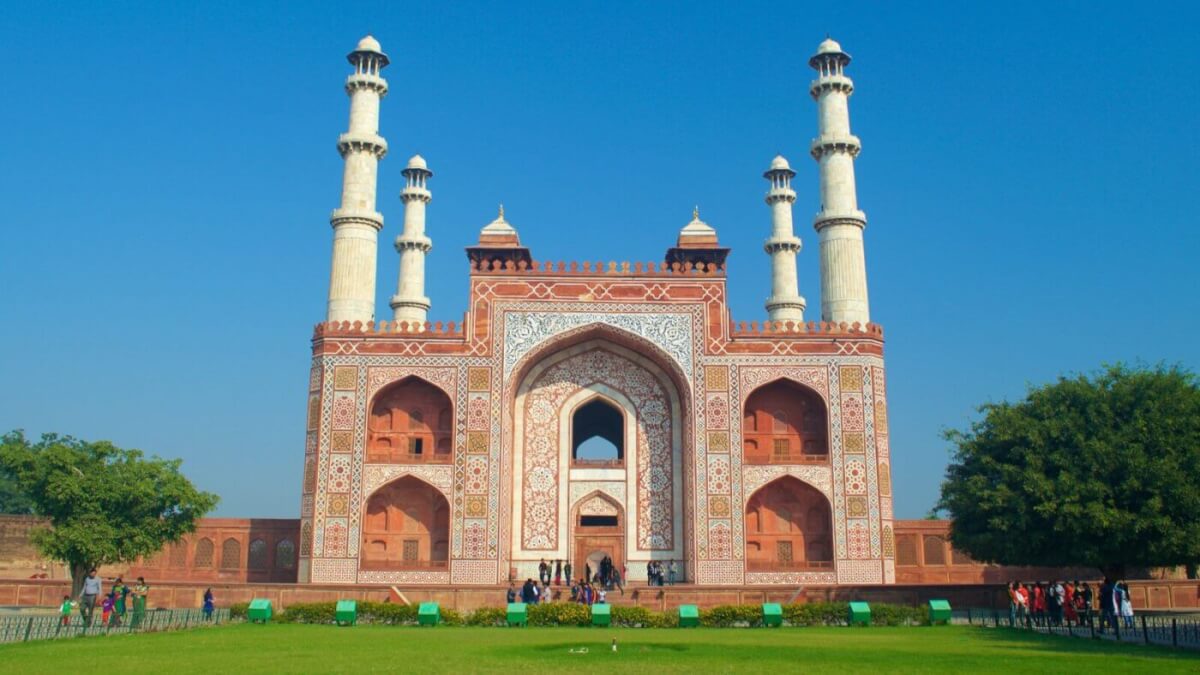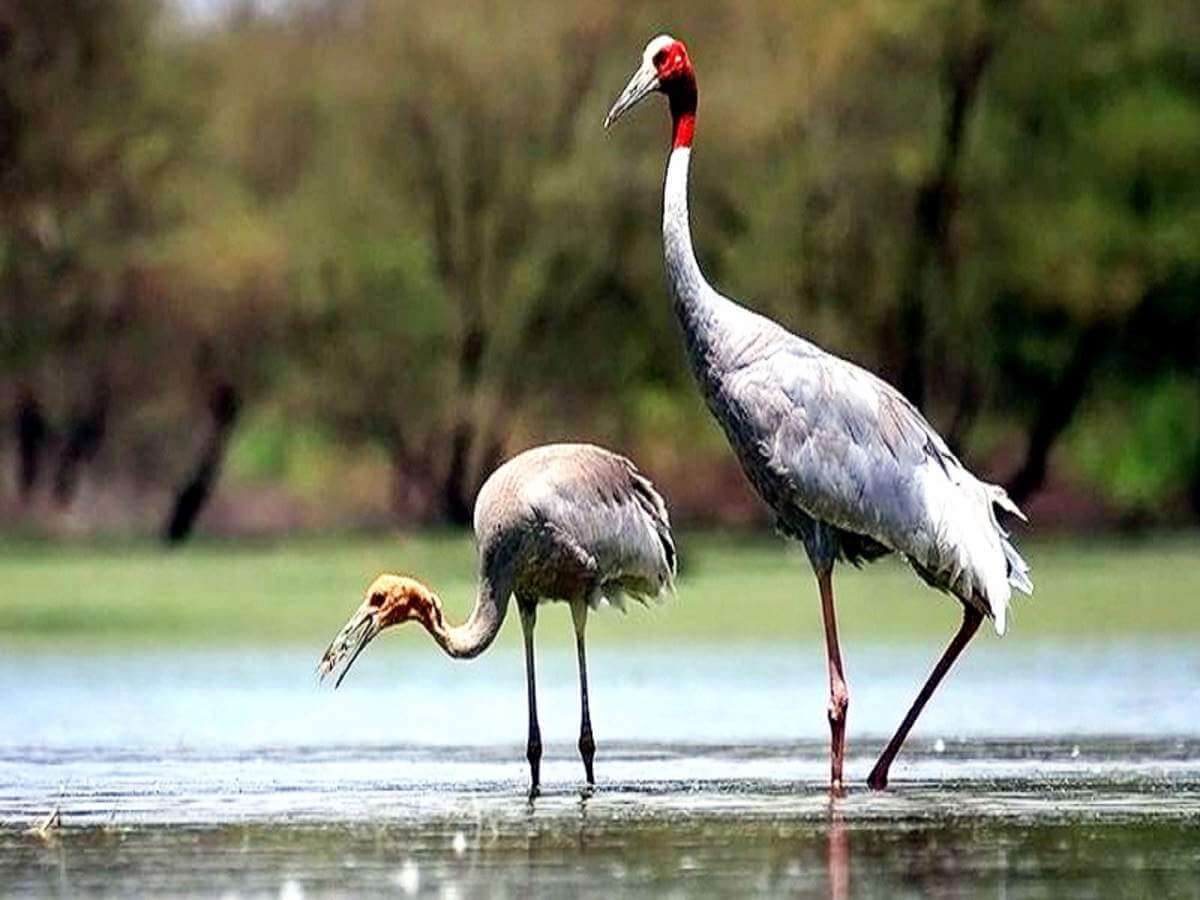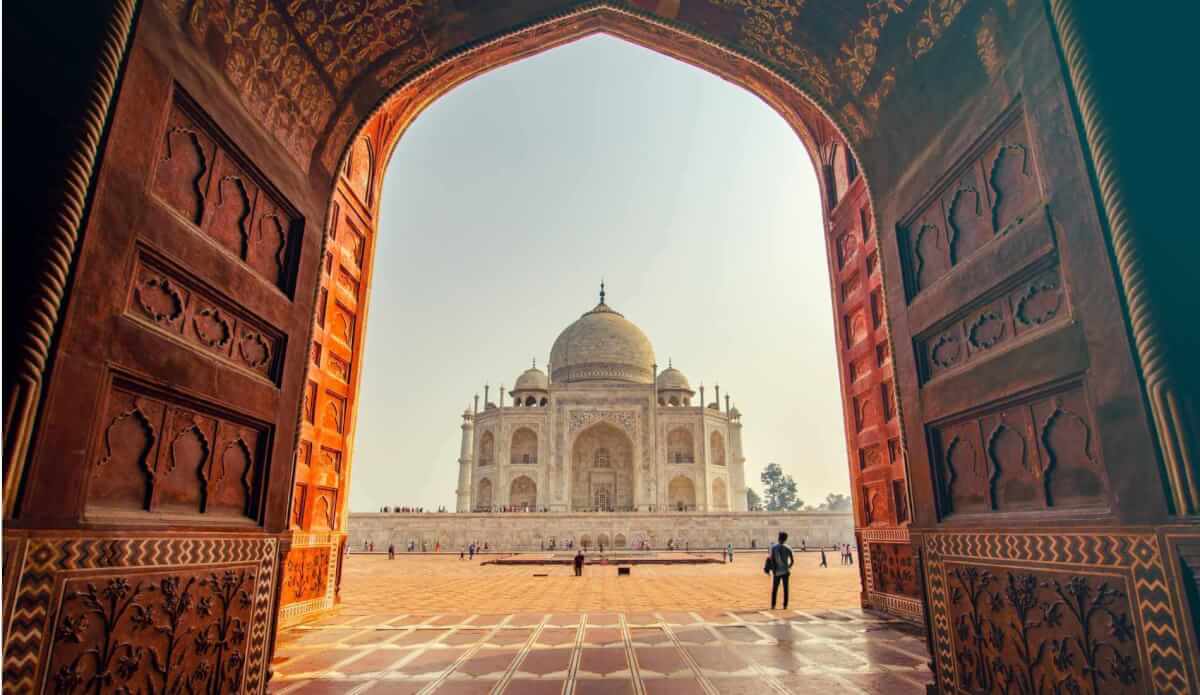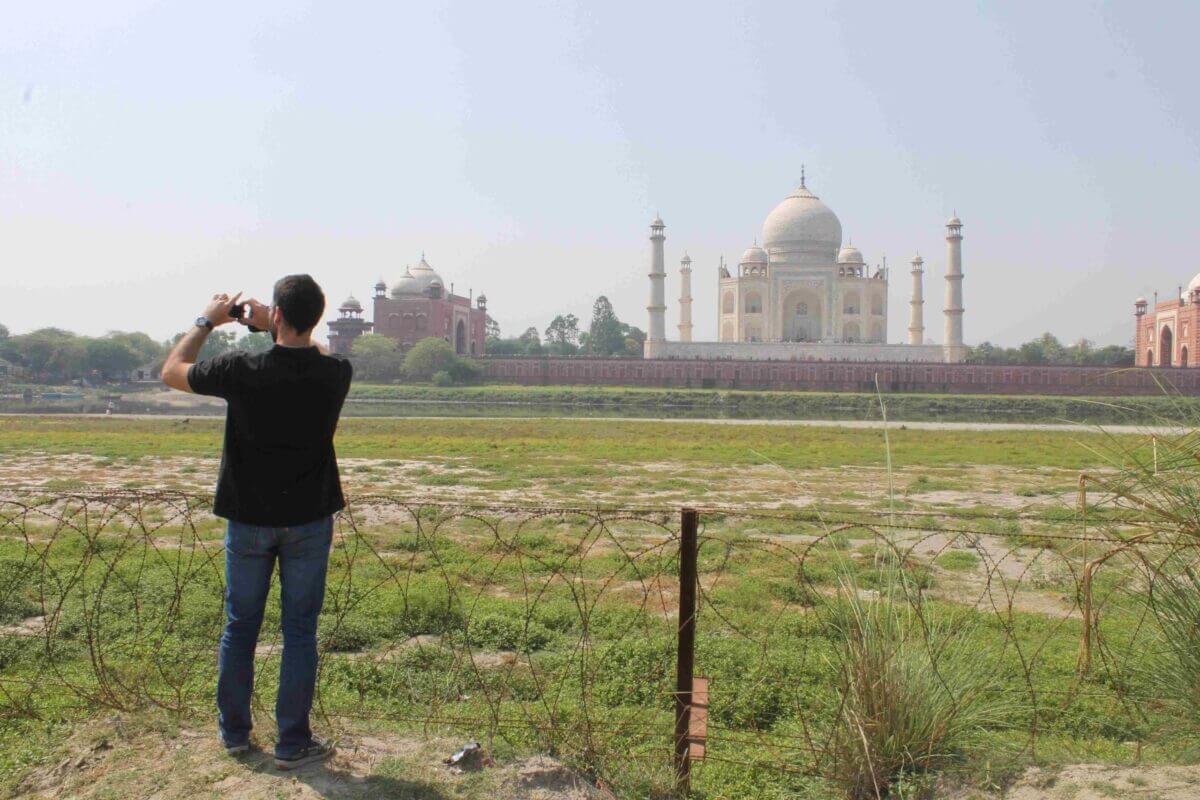- Home
- Holiday Ideas
-
-
- Choose Your Traveling Theme
-
- Adventure Tourism
-
- Cultural Tourism
-
- Tour Packages
-
-
- Packages by State
-
- Holidays by Interest
-
- Popular Tour Packages
-
- Fair And Festivals
-
- Ayurveda And Yoga
-
- Offers
-
- Destinations
-
Agra City of the Taj Mahal
Agra City of the Taj Mahal
The city of the Taj Mahal , one among the seven wonders of the planet , Agra in Uttar Pradesh is India’s hottest tourist destination. Steeped in history, this ancient city is dotted with monuments, architectural wonders and beautifully landscaped gardens, which are remnants of the Mughal reign’s majestic legacy. the town also enjoys a vibrant culinary scene while preserving its exquisite arts and crafts.
Situated on the banks of River Yamuna, the city, once the capital of the mighty Mughals, stands proudly today with a royal heritage that beckons to at least one and every one . While visitors admire the grand structures here and weave through bustling chowks and bazaars, they will also check luxurious hotels, patronize malls and plazas, and enjoys contemporary delicacies at upscale restaurants.
Agra finds a mention within the epic Mahabharata, where it’s mentioned as ‘Agraban’ or an integral a part of the Braj Bhumi or the land of Lord Krishna. tons of serious historical events within the city are said to possess unfolded during the reign of Raja Badal Singh, a Sikarwar Rajput king, who is believed to possess founded the town in 1475. However, it gained political prominence during the rule of Sikander Lodhi (1498-1517) of the Lodhi dynasty. it had been given a replacement lease of life in 1526 AD, under the reign of Mughal emperor Babur. He was a patron of arts and wanted the inhabitants of the town to adopt the finer things in life. This resulted within the city being crammed with skilled craftsmen, artists, statesmen, warriors and nobility. Thus began Agra’s golden age.
Babur’s legacy was carried forward by his progeny, emperors Akbar, Jahangir and Shah Jahan , all of whom added to the city’s grandeur in terms of wealth, patronage and incredible architectural marvels. Agra transformed into a hub of art, culture, learning and commerce. The city’s lip-smacking food, awe-inspiring monuments, and humanities and crafts stand as relics of this illustrious antiquity. Its rich repertoire of arts and crafts has seeped into its modern personality too: Agra may be a haven for crafts like marble and soft stone inlay work. it’s said that Mughal empress, Nur Jahan, personally looked into the event of arts and handicrafts here. it’s said that she was an expert in zari embroidery herself.
Attractions in Agra
Agra Fort
Built by Mughal emperor Akbar in 1565 AD, Agra Fort may be a majestic sandstone built as an ode to the magnificence of the Mughal empire. Encompassing within its 2.5-km-long enclosure walls a shocking imperial city, the fortress is formed sort of a crescent, its eastern wall flanked by River Yamuna. it’s said that the development of the fort was originally begun by emperor Akbar, but completed by his grandson Shah Jahan , who added most of the marble monuments here. there have been originally four gates for entrance, two of which were walled up and just one is open today – the Amar Singh gate. the primary thing that captures one’s attention as they enter is Jehangir (Jahangir) Mahal, a palace said to possess been built by Akbar because the women’s quarters and named after his son, Jehangir (Jahangir). Simple and stylish , it’s home to an outsized stone bowl upon which are carved Persian verses. Local lore holds that this bowl once contained perfume . Adjacent to Jehangir (Jahangir) Mahal lies the palace built for Jodha Bai, said to be Akbar’s favourite queen.
Agra Fort is widely considered to be a masterpiece of designing , design and construction. a number of its other internal structures include the stunning Moti Masjid, Diwan-i-Khas (hall of personal audience) and Diwan-i-Aam (hall of public audience), once home to the legendary Peacock Throne that was eventually taken to Red Fort in Delhi when Shah Jahan shifted his capital there. There are two prominent mosques inside the fort – Nagina Masjid was built by Shah Jahan as a personal mosque for the women of the court and Mina Masjid is believed to possess been built by him solely for his own use.
The Musamman Burj is another interesting structure – it’s an octagonal tower with an open pavilion, and is believed to be where emperor Shah Jahan breathed his last, imprisoned and gazing at his beloved Taj Mahal . Structures concerning other Mughal emperors here include the Khas Mahal, said to possess been inbuilt honour of Jahanara Begum (eldest daughter of Shah Jahan), and Sheesh Mahal or the glass palace. The story goes that it had been once the room for the queens, and its walls are inlaid with several tiny mirrors.
The Department of Tourism, Government of Uttar Pradesh has initiated a sound and lightweight show at Agra Fort that not only provides a peek of the fortress’ glorious history but is additionally a visible treat. Agra Fort is additionally referred to as the ‘Lal Qila’, ‘Fort Rouge’ or ‘Qila-i-Akbari’ and is an unmissable site within the city.
Bateshwar
Bateshwar may be a temple town located 70 km faraway from the town of Agra, and situated on the banks of River Yamuna. it’s believed that the name ‘Bateshwar’ was derived from Vateshwarnathji, one among the various names of Lord Shiva who is that the presiding deity of this pilgrim town. it’s also believed to possess been the birthplace of Lord Krishna’s mother, Devaki. She was the daughter of Raja Surajsen, who is claimed to possess been the founding father of the town, originally called Surajpur.
Bateshwar is a crucial a part of Hindu pilgrim circuits, and is additionally referred to as the son of the dhams – meant to be visited after the four main dhams considered sacred by Hindus are visited. It boasts variety of temples that when totalled to 101. Presently, 42 of these temples are still intact. This town finds a reference in texts of Ramayan, Mahabharat, Matsya Puran etc. The long line of ghats flanked by several temples makes the quaint town a visible also as spiritual treat.
Apart from spiritual enrichment, the temples here also bear traces of ancient architecture which will be admired by visitors. Beautiful frescoes painted with traditional vegetable paints that are still intact in a number of the temples are mesmerising to behold.
The Jains also hold Bateshwar in high think of one legend holds that it had been here that the 22nd Jain tirthankar, Nemichand, was born. This makes it a crucial pilgrim site for both sects of Jainism: Svetambara and Digambara. Various intricately carved Jain temples pay tribute to the tirthankar here, also as at Shoripur, about 3 km away.
Bateshwar is additionally famous for its annual cattle fair, which has been held here for over 400 years. With varying dates per annum , the fair is supposed to coincide with the foremost auspicious period for praying within the town, and is a crucial destination for saints, traders also as local villagers. From camels, oxen, goats and horses to locally made furniture, spices and traditional cooking utensils, it’s tons to supply besides a very authentic experience of rural Indian life within the region. one among the most important fairs of its kind in north India, it’s cover three weeks and draws thousands of tourists per annum .
Chambal Wildlife Sanctuary
Located near Agra in Etawah, along the banks of River Chambal, the Chambal Wildlife Sanctuary may be a natural haven that’s home to a huge sort of flora and fauna. River Chambal originates within the Vidhya ranges in Madhya Pradesh and eventually meets River Yamuna in Etawah. due to this, the rich biodiversity ensured that the 635 sq km of area around it had been declared a wildlife sanctuary in 1979 that stretching across three states: Madhya Pradesh, Rajasthan and Uttar Pradesh .
A highlight of the sanctuary is that the incontrovertible fact that it’s home to a number of the country’s threatened animal species: it’s where you’ll spot the critically endangered gharial, alongside the endangered Ganges dolphin. After the gharial population was nearly exhausted in India during the 1970s, Chambal was chosen together of the most areas for the reintroduction of the species into the wild, following a captive breeding and reintroduction programme.
One of the foremost popular activities at the sanctuary may be a boat ride, which may be a tranquil experience that lets visitors soak within the peaceful energy permeating the green expanse while spotting a number of its wild floral and faunal treasures. Nature walks also are popular, letting travellers explore the vast green landscape on foot.
Chambal Wildlife Sanctuary is additionally ideal for birdwatching, and boasts over 290 species of resident also as migratory aquatic and terrestrial birds. a number of the simplest times during a year to go to the sanctuary, in fact, are determined by the presence of flamingos – from November to May, the world hosts them, while in September you’ll find the rudy shelduck arriving here. Of the resident birds, the Indian skimmers thrive here in vast colonies.
Chini-Ka-Rauza
Chini-ka-Rauza is believed to be the primary structure in India to possess been embellished extensively using glazed porcelain tiles, and is regarded by many as a big landmark in Indo-Persian architecture. it’s the mausoleum of Mughal emperor Shah Jahan’s prime minister, Afzal Khan Aalmi, who was also referred to as Maula Shukrullah, Shirazi. The mausoleum was inbuilt 1635 in Etmadpur and is simply a kilometre faraway from the tomb of Itmad-ud-Daulah. The monument is situated amid beautiful gardens, and is renowned for its blue glazed tiles. These tiles were made using porcelain, believed to possess been brought from China. They were called ‘chini mitti’ (Chinese clay) at the time. While a number of these are partially intact on the mausoleum’s façade, the interiors are fairly well-preserved, and have floral designs that are unique to a signature Persian art style, which eventually found a range in Agra
The most striking feature of the structure is claimed to possess been the tomb, which is now in ruins. Originally, it had been round, very almost like the design of Afghani tombs.
Fatehpur Sikri
Mughal emperor Akbar built his capital at Fatehpur Sikri between 1572 and 1585 AD. it had been constructed using red sandstone. it’s said that the emperor, who wished for a son, visited Sikri to urge blessed by sufi saint, Sheikh Salim Chishti. He was soon blessed a son and was prompted to determine his capital here, building a gorgeous mosque and three palaces, one each for his three favourite wives. He named the town Fatehpur Sikri, meaning the town of victory. He also named his son Salim, after the saint who had blessed him.
Built on a stony ridge, Fatehpur Sikri lies richly enveloped in local folklore. One story goes that long before Akbar made it his capital, Mughal emperor Babur had named the town ‘shukri’ (thanks) as a gesture of acknowledgement to the local residents who had helped him win the Battle of Khanwa, in 1527, against Rana Sanga, a Rajput ruler from Mewar. His grandson, emperor Akbar, built the Buland Darwaza a few years later after capturing Gujarat, and gave the town its current name.
Fatehpur Sikri’s monuments resound with stories and medieval anecdotes. A structure called Aankh Michauli (blind man’s buff), as an example , is believed to be where the emperor would play the eponymous game together with his queens. a huge sandstone courtyard nearby is known as after another game, Pachisi, and may be a life-sized version of the Indian parlor game . Legend has it that the emperor played this game with women standing within the place of pieces. The Jama Masjid, one among the most important mosques in India, showcases the assimilation of Iranian architectural elements and was inbuilt 1648 AD by Mughal emperor Shah Jahan’s daughter, Jahanara Begum. Other monuments here include the Diwan-i-Khas, Mariyam’s Tomb and Birbal’s Palace. Panch Mahal, a four-storeyed columnar structure, is claimed to possess been where the emperor and his wives would watch Tansen, among the foremost well-known court musicians of all time, perform.
The tomb of Salim Chishti, which lies at the guts of Fatehpur Sikri’s story, is an oasis of white within the midst of red sandstone, and attracts thousands of tourists. It still commands immense respect and faith from devotees, who come from far and wide with their ‘mannats’ or wishes and tie a thread for every wish, hoping for the sufi saint to bless them and make it come true. Sheikh Salim Chishti’s death anniversary is understood as ‘Urs’ and includes a ceremony held here that’s attended by devotees from across the planet .
Firozabad
Located at a distance of about 47 km from Agra is Firozabad, also referred to as the glass city of India and therefore the city of bangles. Built by Tughlaq king, Feroz Shah Tughlaq, it’s renowned for its glass bangles and other glass products. Local stories suggest that the city’s glass industry – which continues to thrive today – began when travellers brought glass articles to India. These objects were collected and heated during a furnace referred to as ‘bhainsa bhatti’ and remoulded to make bangles, marking the start of the trade. A suburb referred to as Suhag Nagar may be a hub for glass bangles of all varieties in Firozabad. The Churi Bazaar (bangle market) offers you many choices from the best of their kind, and not only in glass – lac and metal bangles also can be bought here, all beautifully crafted by skilled craftspeople.
The city is additionally home to the Lord Bahubali Temple. it’s a crucial centre for Jain pilgrimages as Lord Bahubali was the son of the founding father of Jainism, the primary tirthankar, Lord Rishabh. consistent with Jain texts, Lord Bahubali attained moksha (salvation). In Suhag Nagri, Firozabad, lies the holy ‘Jain Nagar’. it’s here that Lt Seth Chhadamilal installed the statue of Lord Bahubali. This statue of Lord Bahubali is among the most important idols of its kind in North India. Weighing quite 3,500 tonne, its dimensions are 45 x 12 ft. The statue is formed of granite. There also are other monuments concerning Jain history and religion here.
Itimad-ud-Daulah’s tomb
This beautiful marble tomb is devoted to Mirza Ghias Beg, the daddy of Mughal empress Nur Jahan. He was accorded the title of Itimad-ud-Daulah (pillar of the state) during his time at the Mughal court. The empress is believed to possess commissioned the development of the mausoleum in his memory between 1622 and 1628 AD.
The story goes that Mirza Ghias Beg was a poor Persian merchant who was on his thanks to India together with his wife when she gave birth to a woman . Since the family was stricken with poverty, the oldsters decided to abandon the kid , but were eventually forced to return to her after hearing her helpless cries. because it clothed , she was a bringer of excellent fortune to her family – they soon found a caravan that took them to the court of emperor Akbar. because the years passed, Beg rose to become a minister within the Mughal court, also as a trusted treasurer. He continued to rise within the court even after Akbar’s demise, under the rein of emperor Jehangir, who bestowed him with the title of Itimad-ud-Daulah and eventually married his daughter. Located on the banks of River Yamuna, the structure exhibits strong Persian architectural influences, and is made entirely using white marble, inlaid with semi-precious stones. Local lore says that this edifice was considered by many an precursor for the Taj Mahal . this is often why it’s sometimes mentioned as ‘Baby Taj’. The marble lattice screens, referred to as jaalis, lend thereto a softer, more delicate air as compared to the red sandstone mausoleums that preceded it within the region. this is often also the primary Mughal structure to possess used pietra dura work, also because the first tomb to be built on the banks of River Yamuna. Chini-ka-Rauza and Mehtab Bagh are very accessible , and a fast gather of all three spots are often done within a couple of hours.
Mariyam’s Tomb
This unique red sandstone tomb was inbuilt the memory of Mughal emperor Akbar’s wife, Mariam-uz-Zamani Begum, also referred to as Hira Kunwari, Harka Bai or, most popularly, Jodha Bai. She was originally a Rajput princess, and was the primary Rajput wife of emperor Akbar. While the Mughal ruler already had several other wives before he married her, she went on to become the mother of the heir to the Mughal throne, Jehangir. Jodha Bai was also mentioned because the queen dowager of Hindustan during Akbar’s reign also as during the reign of her son, Jehangir.
The longest-serving Hindu empress within the history of the Mughal empire, she holds a big position within the medieval history of India. Her marriage to emperor Akbar, while marking a radical step in terms of a cross-religion alliance, also marked the start of a gradual shift in Akbar’s religious also as social principles and, subsequently, policy. As such, she holds the excellence of being a logo of the Mughal empire’s religious tolerance during the reigns of her husband and her son, also as its inclusive, egalitarian policies during the amount . Her mausoleum lies barely a kilometre faraway from Akbar’s tomb in Sikandra, and is found near Fatehpur Sikri. it had been built by emperor Jehangir in 1623.
Mehtab Bagh
This beautiful garden is found on the western banks of River Yamuna and stands in perfect alignment with the gardens of the Taj Mahal located across the river. Spread across 300 sq m, Mehtab Bagh has been the location of several intriguing excavations. Local lore holds that it had been the last during a series of 11 pleasure gardens built by Mughal emperor Babur by the riverbank. Today, it stands as a pleasant viewpoint from where to look at and photograph the marble wonder that’s Taj. The view from the doorway gate is especially beautiful and will not be missed.
Legend goes that while emperor Babur built it, Shah Jahan identified it because the perfect spot from where to behold the Taj Mahal and gave it its name, intending for it to be a moonlit pleasure garden. Walkways, fountains, pavilions and pools were created to decorate it, and fruit trees were planted aplenty. the planning is then believed to possess been approached almost as if Mehtab Bagh were meant to be a neighborhood of the Taj Mahal complex, sort of a riverfront terrace. the parable around Shah Jahan’s decide to build a ‘black Taj Mahal’ also starts during this expanse. Mehtab Bagh is believed to be the location where he had planned to create a black marble mausoleum for himself, a veritable twin to the Taj Mahal – in exact alignment to his wife’s fabled mausoleum – until his ambitions were thwarted by his son, Aurangzeb, who imprisoned him till his death. The several excavations that have taken place here over the years have unearthed various structures like an outsized octagonal tank with 25 fountains, a pond and a charbagh. Mumtaz Mahal’s tomb is, in fact, said to possess been found halfway between the most entrance of the Taj Mahal complex and therefore the end of Mehtab Bagh. The renovation of the park was meticulously administered by the Archaeological Survey of India (ASI).
Landscape artists from ASI figured out the replanting of trees, herbs and plants to match the first garden, replicating riverside gardens like Shalimar Bagh in Kashmir. Around 80 plants identified with Mughal horticulture were planted like guava, hibiscus, neem, jamun and ashoka. Today, Mehtab Bagh stands pristine in its grandeur, restored to its rightful glory.
Ram Bagh
A Mughal garden believed to possess been designed by emperor Babur and later renovated by his great-granddaughter-in-law empress Nur Jahan, Ram Bagh is claimed to be the oldest Mughal garden within the country. The concept of delight gardens among the Mughals, it’s said, relates to the notion of making a picture of paradise on earth. Ram Bagh, originally believed to possess been named Araam Bagh (garden of rest), may be a fine example of Islamic architecture and style . Located about 5 km faraway from the Taj Mahal , this is often where Babur is believed to possess been buried temporarily, before he was taken to his final resting place in Kabul, Afghanistan.
The layout of the garden isn’t premised on the charbagh pattern typical to the Mughals, comprising four main divisions criss-crossed by waterways and footpaths, but instead the pattern of Bagh Hasht-Behisht. Three levels are maintained: one for vegetables and flowers, one for flowerbeds and one for structures, tanks and terraces. It features several Persian influences, and was designed to form very intelligent use of water from River Yamuna, distributing it across the expanse using cascades and maintaining cooler temperatures even during hot summer days. Fountains and pavilions lie on either side of the most water channel, and therefore the entire garden is enclosed by walls, with corner towers topped by pillared pavilions. Ram Bagh is open from sunrise to sunset.
Sikandra
The mausoleum of Mughal emperor Akbar, Sikandra may be a red sandstone and marble tomb built by the emperor himself, and finished by his son, Jehangir, in 1613. Akbar is believed to possess selected the location of the tomb during his lifetime and planned the structure himself.
It is a logo of the Mughal ruler’s philosophy and secular worldview, bringing together the best in Hindu and Islamic architectures. it’s also one among the foremost well-preserved monuments within the region, retaining most of its original glory. The tomb lies within a charbagh, which may be a beautiful addition to the complex.
The interior of the tomb bears calligraphy reflective of the tenets of Din-e-Ilahi, a spiritual movement founded by Akbar that brought together Islam, Hinduism and a number of other other faiths.
Soor Sarovar Bird Sanctuary
Situated on the Delhi-Agra highway, Keetham Lake is about 20 km by road from Agra. A serene body of water surrounded by lush green and enveloped in peaceful silence punctuated only by the calls of birds, this is often a perfect picnic spot. Shaped sort of a pentagon, the lake is home to a huge sort of water birds and fish also as man-made islands, and is additionally referred to as Soor Sarovar. The name, local lore has it, was derived from the name of Hindi poet Soordas, who was inspired to compose Bhakti Kavya here, one among his finest works of devotional poetry.
Another story holds that this is often also the poet’s birthplace. The aviary surrounding it, declared so in 1991, covers a neighborhood of roughly 8 km, of which the lake comprises 2.25 sq km. the world provides shelter to just about twenty-four species of migratory also as resident birds. The Uttar Pradesh Forest Department has also developed shallow areas and woodlands round the lake for waders that creates it even easier for birds to nest here. Some birds which will be spotted here include egrets, purple herons, comb ducks and spoonbills.
Taj Mahal
Mughal emperor Shah Jahan , the creator of the Taj Mahal , said that the sweetness of the monument made “the sun and therefore the moon cry from their eyes”. it’s also been described as a “teardrop on the cheek of eternity” by Nobelist Rabindranath Tagore. per annum , thousands of tourists from round the world make a beeline for this breathtakingly ethereal marble monument, considerd by many because the most beautiful building constructed by man. The monument was built as a memorial by Mughal emperor Shah Jahan for his deceased wife, Mumtaz Mahal. it’s one among the seven wonders of the planet and may be a monument of pride for not just Agra but also India.
A UNESCO World Heritage Site, it’s featured in most literature about India and is one among the foremost enduring images of the country. Its name is believed to possess been drawn from the Persian language: ‘taj’ means crown and ‘mahal’ means palace, thus making this the palace of the crown. Interestingly, the queen it had been inbuilt memory of, originally named Arjumand Begum, held the name Mumtaz Mahal, which meant the crown of the palace. Although it’s best referred to as a logo of affection , a grieving emperor’s ode to his deceased queen, another legend sees the Taj Mahal as an embodiment of Shah Jahan’s vision of kingship. The story goes that he sought to create something like heaven on earth, a spectacular, unbelievably beautiful monument that reinforced the facility also because the perceived divinity of the monarch as next only to the Almighty.
It is also widely believed that emperor Shah Jahan invited artisans from Italy and Persia to figure on this marble monument. it’s said that Ustad Ahmad Lahori was the chief of the project while Ustad Isa Afandi made the location plan. The calligraphic work has been credited to Amanat Ali Khan Shirazi. a desirable aspect of this structure is that it’s an equivalent from all four sides, except the one that faces River Yamuna. This side is claimed to possess been especially embellished to function the most entrance for the emperor. Shah Jahan would approach the Taj Mahal from the river, aboard a barge, while the doorway employed by tourists today served, at the time, as an entryway for soldiers and customary people. There are intricate inscriptions on all four entrances, while marble carvings and pietra dura mosaics adorn the walls. Lapis-lazuli, cornelian, mother of pearl, agate and emerald are a number of the valuable gems and stones that were once utilized in its design. it’s said that employment on its construction began in 1631. Legend has it that it took 20 years to finish this architectural marvel!
It is also riddled with optical illusions and masterful architectural safeguards. together first beholds the monument from the most gate, as an example , the Taj Mahal looks large and imposing, but as you progress closer, it appears to shrink in size. Also, the minarets surrounding the edifice, while perfectly upright to the eye , have actually been constructed to lean faraway from it in order that , should a disaster like an earthquake happen , they might fall faraway from and not on the mausoleum.
Taj Nature Walk
Taj Nature Walk covers a 70-hectare verdant natural paradise that gives exceptional views of the famous Taj Mahal . an excellent thanks to feast your eyes on the lesser-explored sites of the favored tourist destination, this takes you thru a green belt situated on the proper bank of River Yamuna. A trail covering roughly 9 km, it also features a series of viewing points and a huge sort of flora and fauna. you’ll spot local butterflies and birds here, the latter including parakeets and kingfishers. There also are grass mounds, rifts and valleys also as a natural ridge area here. One also can spot quite 46 sorts of flowers here and animals like blue bulls, jackals and hares.
How to get there
By Air
Agra’s Kheria Airport is a seasonal airport which is mostly only connected to New Delhi. Flights do not always ply on this route. Other ways to reach Agra include flying into New Delhi which is about 210 km away from Agra. The other cities one can fly into include Gwalior, Jaipur, and Lucknow.
Rail
Agra is connected via regular railway services to many big cities like New Delhi, Mumbai, Allahabad, and Jaipur. The train stations here include Agra Fort, Agra Cantt., Agra City, Raja ki Mandi, Idgah, and Yamuna Bridge.
By Road
Agra is connected via regular bus services to New Delhi (about 210 km away), Jaipur (about 238 km away), Gwalior (about 120 km away), Lucknow (about 336 km away), and Kanpur (about 276 km away). These could be operated by private companies, the UPSRTC or other state road transport corporations.
WANT TO RENT A CAR IN INDIA ?
Choose Your Traveling Theme



